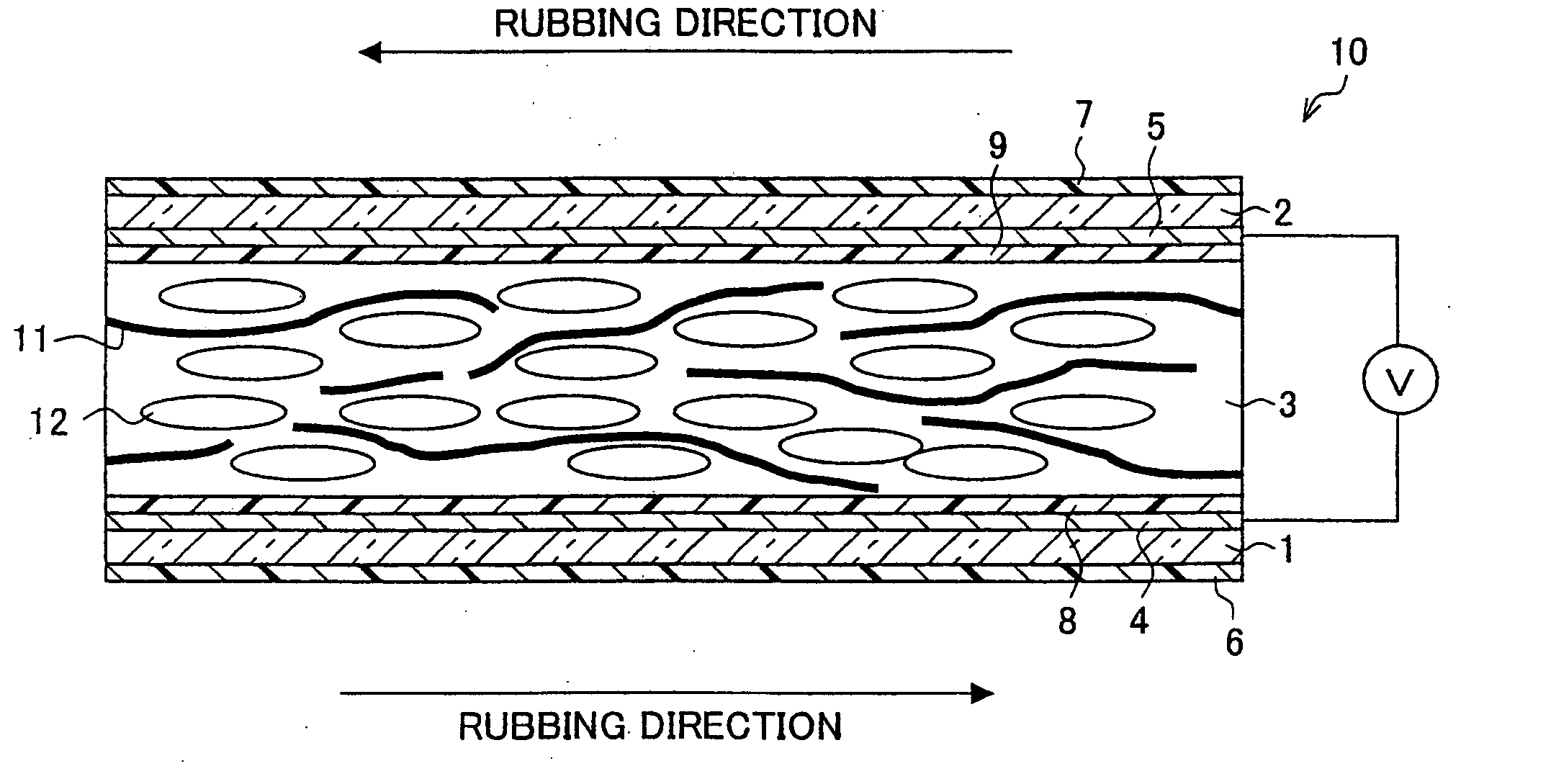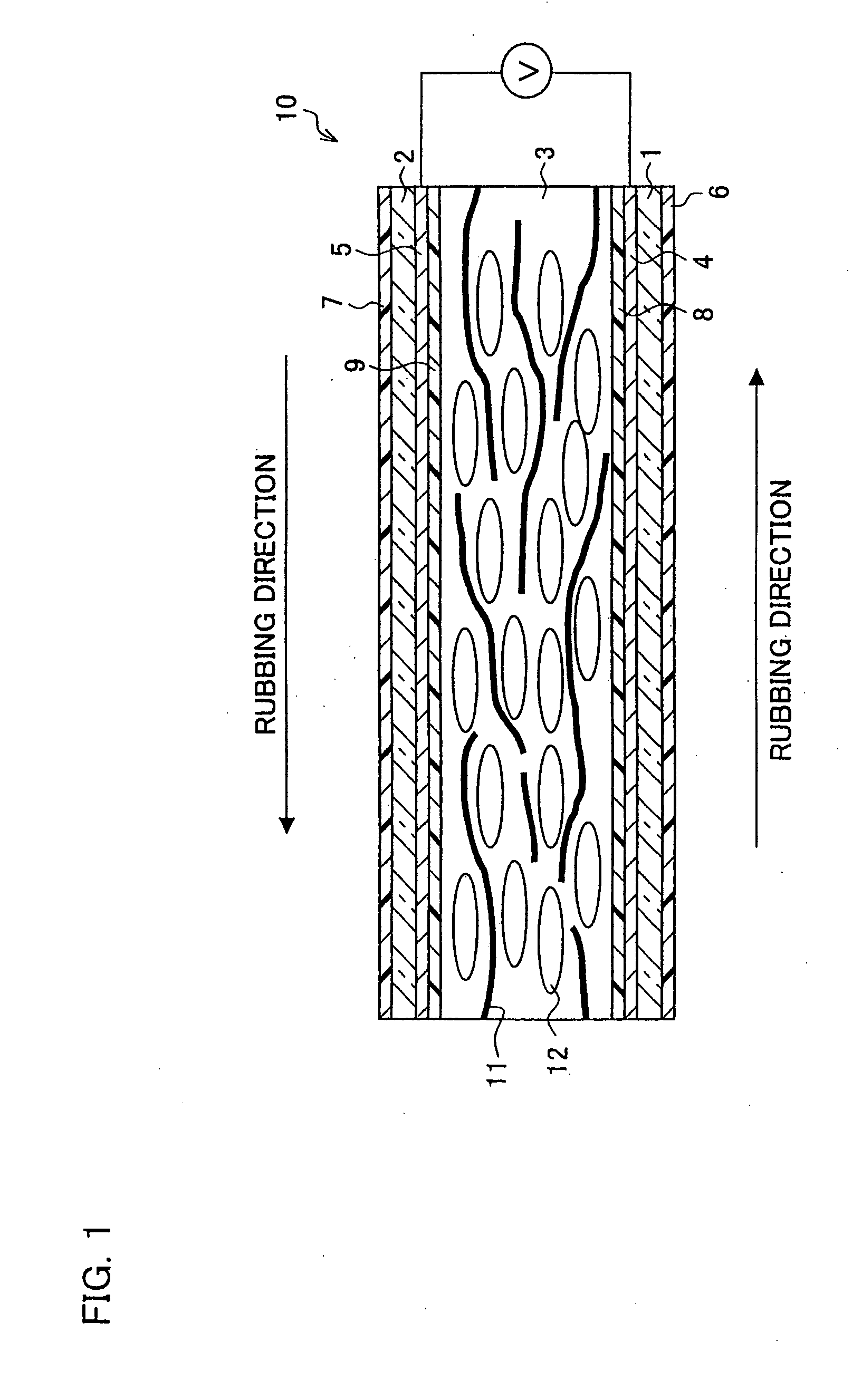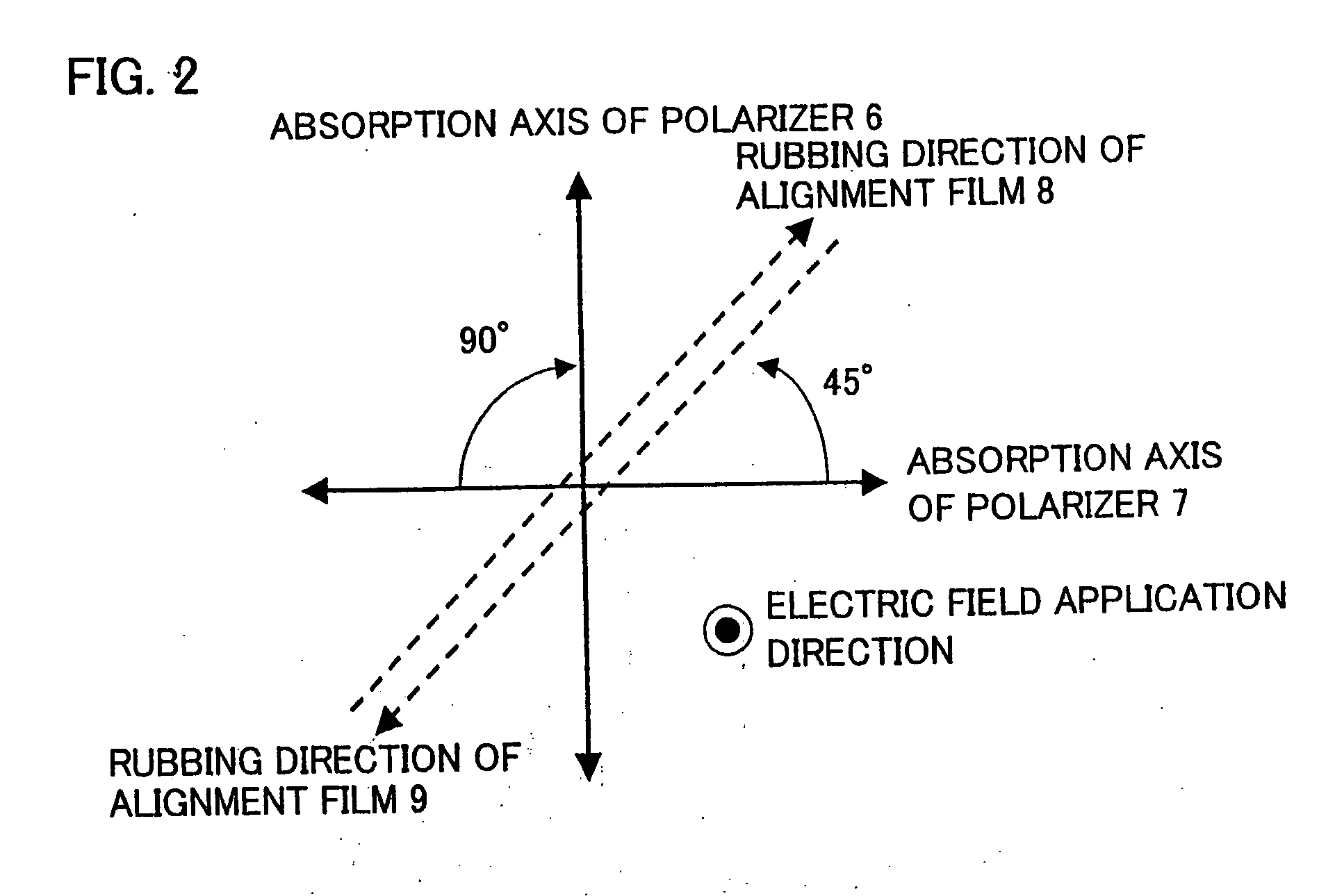Display element, display device, and manufacturing method of display element
- Summary
- Abstract
- Description
- Claims
- Application Information
AI Technical Summary
Benefits of technology
Problems solved by technology
Method used
Image
Examples
first embodiment
[0069] An embodiment of the present invention is described below, referring to Figures. Note that, the respective embodiments in this specification mainly deal with the case of using a field as means for changing degree of optical isotropy of the medium; however, the present invention is not limited to this case, and a magnetic field, light etc. may be used instead of a field. Further, the present embodiment mainly deals with the case of carrying out display with a medium that exhibits an optical isotropy when a field (external field) is applied or when no electrical field (external field) is applied; however, the present invention is not limited to this case. More specifically, the medium of the present embodiment is not limited to the medium that is isotropic when a field (external field) is applied or when no field (external field) is applied, but may be a medium that is anisotropic when no field (external field) is applied, and is changed in degree of optical anisotropy in respo...
second embodiment
[0188] The following explains another embodiment of the present invention with reference to Figures. For ease of explanation, materials having the equivalent functions as those shown in the drawings pertaining to the foregoing First Embodiment will be given the same reference symbols, and explanation thereof will be omitted here.
[0189] The present embodiment also uses the display element described in First Embodiment, which however includes the alignment films 8 and 9 that differ from each other in rubbing directions. More specifically, the display element of the present embodiment has the same structure as that of the display element of First Embodiment except for the alignment films 8 and 9 that differ from each other in rubbing directions. Note that, as to the medium to be sealed in the material layer 3, the display element of the present embodiment uses the medium with negative dielectric anisotropy, that is one of the mediums described in First Embodiment. Further, the display...
third embodiment
[0212] The following explains still another embodiment of the present invention with reference to Figures. For ease of explanation, materials having the equivalent functions as those shown in the drawings pertaining to the foregoing First Embodiment will be given the same reference symbols, and explanation thereof will be omitted here.
[0213]FIG. 13 is a cross-sectional view illustrating a schematic structure of a display element (display element 30) according to the present embodiment. For example, the display element 30 is provided in the display device 100 as a replacement of the display element of First Embodiment. As shown in the figure, the display element 30 includes a material layer (optical modulation layer) 3 between the two opposed substrates (substrate 1 and substrate 2). Further, on one surface of the substrate 1, the surface opposite to the substrate 2, pectination electrodes (pectination-shaped electrodes) 4a and 5a, that function as field applying means for applying ...
PUM
| Property | Measurement | Unit |
|---|---|---|
| Wavelength | aaaaa | aaaaa |
| Particle diameter | aaaaa | aaaaa |
| Temperature | aaaaa | aaaaa |
Abstract
Description
Claims
Application Information
 Login to View More
Login to View More - R&D
- Intellectual Property
- Life Sciences
- Materials
- Tech Scout
- Unparalleled Data Quality
- Higher Quality Content
- 60% Fewer Hallucinations
Browse by: Latest US Patents, China's latest patents, Technical Efficacy Thesaurus, Application Domain, Technology Topic, Popular Technical Reports.
© 2025 PatSnap. All rights reserved.Legal|Privacy policy|Modern Slavery Act Transparency Statement|Sitemap|About US| Contact US: help@patsnap.com



